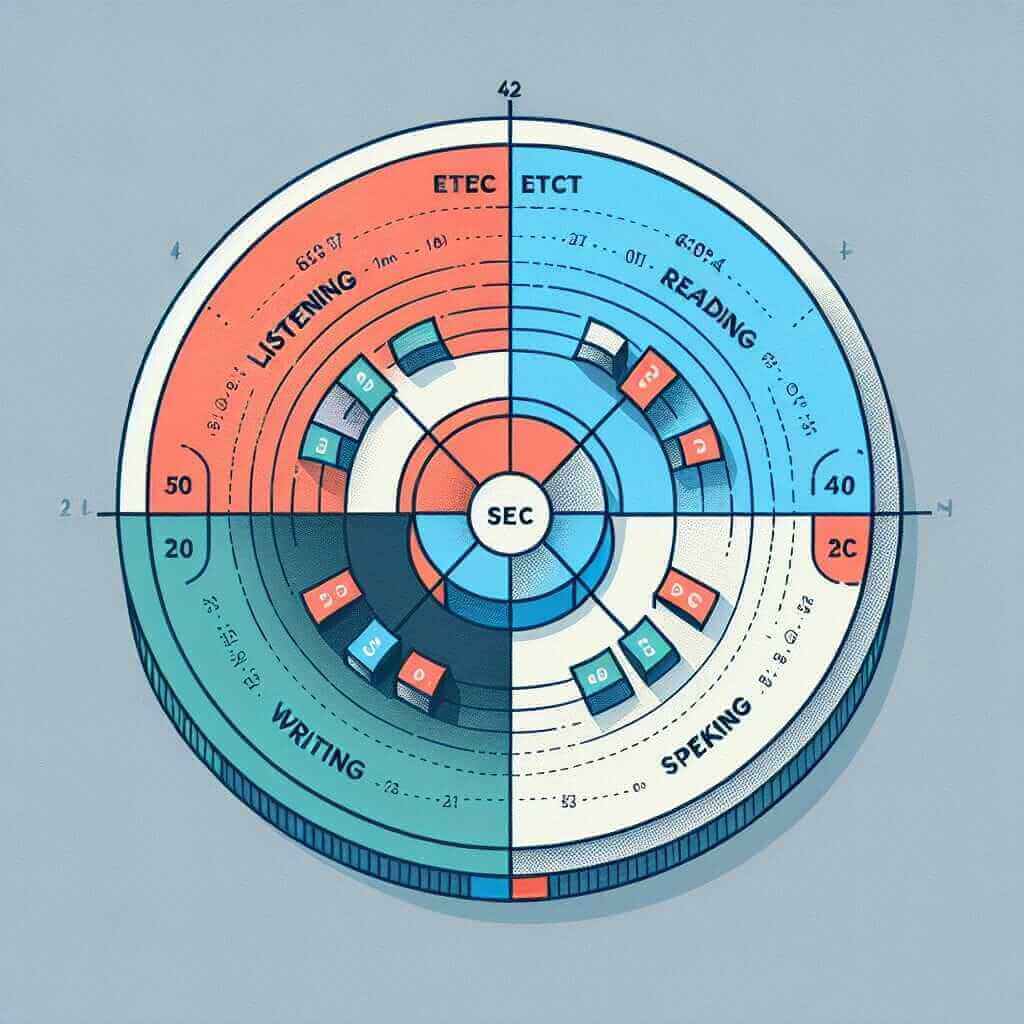The IELTS exam can seem like a daunting challenge, and understanding its structure is the first step towards conquering it. A common question many test-takers have is, “How many sections are there in IELTS?” This comprehensive guide will answer that question and delve deeper into each section, providing you with the knowledge and tools to excel in your IELTS journey.
Understanding the IELTS Exam Structure
The IELTS exam, regardless of whether you choose IELTS Academic or IELTS General Training, comprises four sections designed to assess your English language proficiency in different areas. These sections are:
- Listening: This section evaluates your ability to understand spoken English.
- Reading: This section assesses your comprehension of written English.
- Writing: This section tests your ability to express yourself clearly and accurately in written English.
- Speaking: This section evaluates your ability to communicate effectively in spoken English.

A Closer Look at Each Section
1. Listening
The Listening section is the same for both IELTS Academic and General Training. It consists of four recordings, each played only once. You will be required to answer a variety of question types, including multiple choice, sentence completion, and diagram labeling.
Example:
In a recording about a museum tour, you might hear:
“The museum’s collection of ancient Egyptian artifacts is housed on the second floor, in the west wing.”
A corresponding question might be:
Where are the ancient Egyptian artifacts located?
Answer: Second floor, west wing
2. Reading
The Reading section differs between IELTS Academic and General Training.
- Academic: Features three long passages taken from books, journals, magazines, and newspapers. The texts are academic but accessible to a wide range of subjects.
- General Training: Includes extracts from books, magazines, newspapers, notices, advertisements, company handbooks, and guidelines. The focus is on everyday, practical English.
Question types are similar to the Listening section, including multiple choice, identifying information, and matching headings.
3. Writing
The Writing section also differs between IELTS Academic and General Training.
-
Academic: You are required to write two tasks:
- Task 1: Describe, summarize, or explain visual information presented in a graph, table, chart, or diagram (150 words minimum).
- Task 2: Respond to a point of view, argument, or problem presented in an essay format (250 words minimum).
-
General Training: You are required to write two tasks:
- Task 1: Write a letter requesting information or explaining a situation (150 words minimum).
- Task 2: Write an essay in response to a point of view, argument, or problem (250 words minimum).
4. Speaking
The Speaking section is the same for both IELTS Academic and General Training. It is a face-to-face interview with a certified examiner.
The interview is divided into three parts:
- Part 1: Introduction and interview – General questions about yourself and familiar topics.
- Part 2: Individual long turn – You will be given a topic card and have one minute to prepare a 1-2 minute speech.
- Part 3: Two-way discussion – A discussion with the examiner related to the topic in Part 2.
Common Mistakes and How to Avoid Them
- Poor time management: Practice timing yourself during preparation to allocate sufficient time for each question.
- Not reading instructions carefully: Misinterpreting instructions can lead to incorrect answers.
- Ignoring keywords: Identifying keywords in questions and texts is crucial for finding correct answers.
- Overlooking answer sheet instructions: Familiarize yourself with the answer sheet format to avoid mistakes during the exam.
Practice Makes Perfect
Consistent practice is key to achieving your desired IELTS score. Utilize practice tests, familiarize yourself with different question types, and work on improving your English language skills in all areas.
This guide provides a comprehensive overview of the IELTS exam structure, answering the question “How many sections are there in IELTS?” Remember that consistent effort and effective preparation are your best allies in achieving success in your IELTS journey. Good luck!